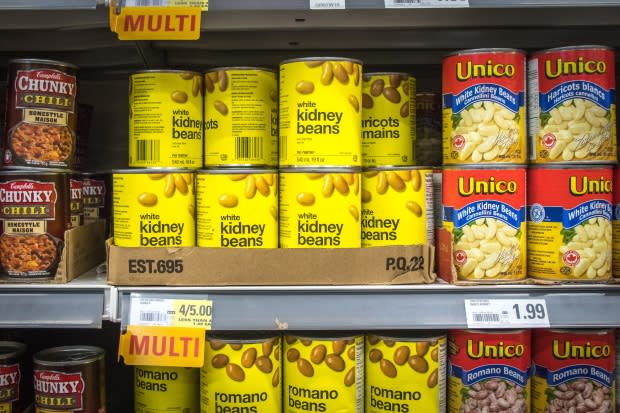Start small with the food guide, Halifax dietitian recommends
Plan ahead, cook at home and sit down to savour meals with friends or family, suggests a Halifax dietician for people hoping to follow Canada's revamped food guide.
The new guide focuses on food choices — such as eating more vegetables, fruits, whole grains and a variety of proteins — that have already been encouraged for years, said Ellen Doyle, a registered dietitian.
On Tuesday, the federal health minister released the first revision to Canada's Food Guide since 2007. Instead of breaking down food by recommended serving size and into four major food groups, the new guide makes suggestions for what to eat regularly, what to avoid, and stresses preparing meals at home.

Doyle hopes it reminds people "food is more than nutrients" and nudges people toward healthier habits.
"A lot of people are shoving their breakfast in on their drive to work or they're eating their lunch at their desk, and I think that message on eating together and enjoying food again is something that we, as Canadians, do really need to focus on," she said.
"Slowing down that eating process makes us more aware of what we're eating. We're more able to enjoy our food and we can feel more satisfied sooner when we do pay attention to what we're eating."

Doyle, who works with Atlantic Superstores, said the new guide doesn't have any surprises, but she's glad to see it focuses on what food proportions on a plate should look like.
She cautioned people not to worry about overhauling their diet immediately. Dairy still has a place, but it's not as prominent, she said.
"This allows people the freedom to choose the foods they enjoy and that fit within their own cultural beliefs as well. There's a lot more flexibility," she said.

Those wary of the new suggestions of including more plant-based proteins, such as beans, tofu and lentils, could start small. For instance, cutting the amount of ground beef in half in a recipe and incorporating lentils to fill the other half.
"It gets you used to using something new and exposes you to that flavor and the taste, but it doesn't change your whole recipe. So those small, simple changes are really what can have a big impact over time."
If someone doesn't like hummus, they could try roasted chickpeas as a crunchy snack, she said.
While baking, people can add pureed lentils to muffins or loaves, either as a substitute for part of the flour or just to boost the protein and fibre content.
Creating meals at home can have the added benefit of educating children about food. The Health Canada site includes recipe ideas, which Doyle said could be helpful for families experimenting with cooking more.

Heather McNulty, the executive chef with Chartwells for Mount Saint Vincent University, said her kitchen is incorporating more beans, chickpeas and lentils into the menu this week.
"Today, for instance, we have an avocado and chickpea salad wrap. And we did an apple cake with a chickpea puree which was kind of cool. Yesterday, we did a navy bean pasta soup with lentil and roasted vegetable salad."
McNulty said about 300 students at MSVU are on a meal plan and she said many of them are making more health-conscious choices at meal times.
Last week, a black bean quinoa burger and a white bean and kale pizza were big hits with the students.
When it comes to the revamped food guide, she said she thinks "it's going to give people a little bit more of a reason to think about what they're actually putting in their body."
One way students at MSVU have been incorporating more leafy greens into their diets is through smoothies, McNulty said.
"They make a lot of smoothies by adding kale, spinach," she said.

